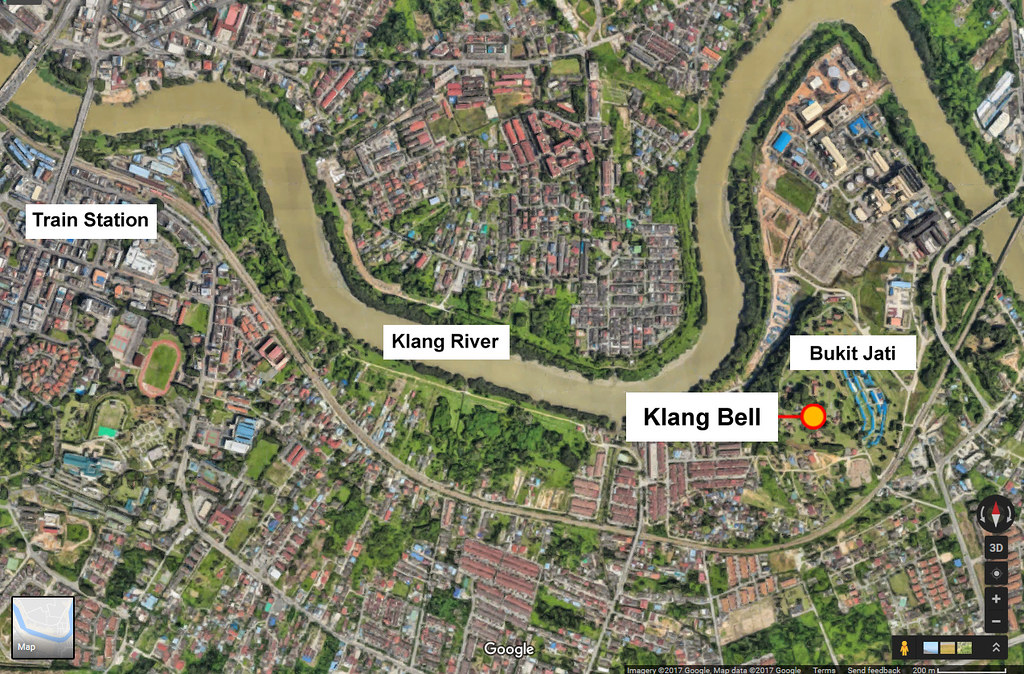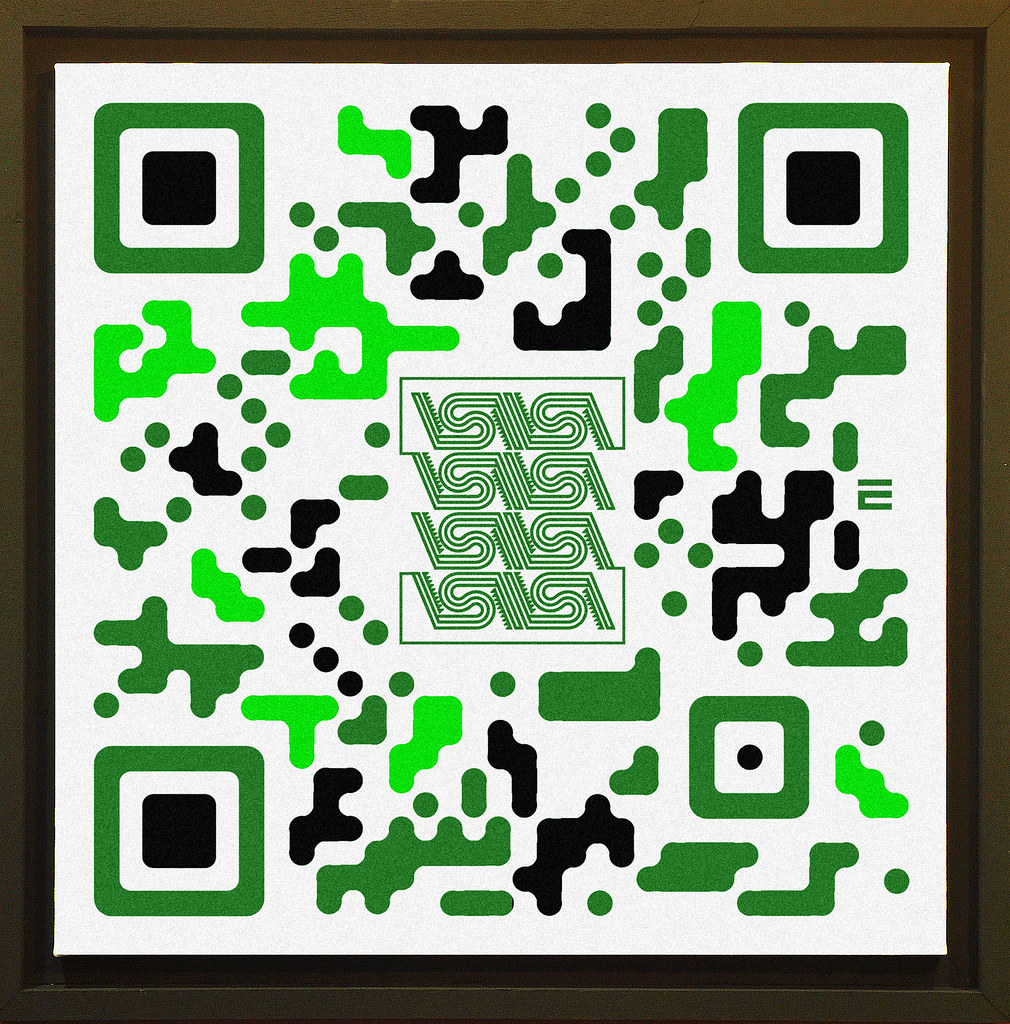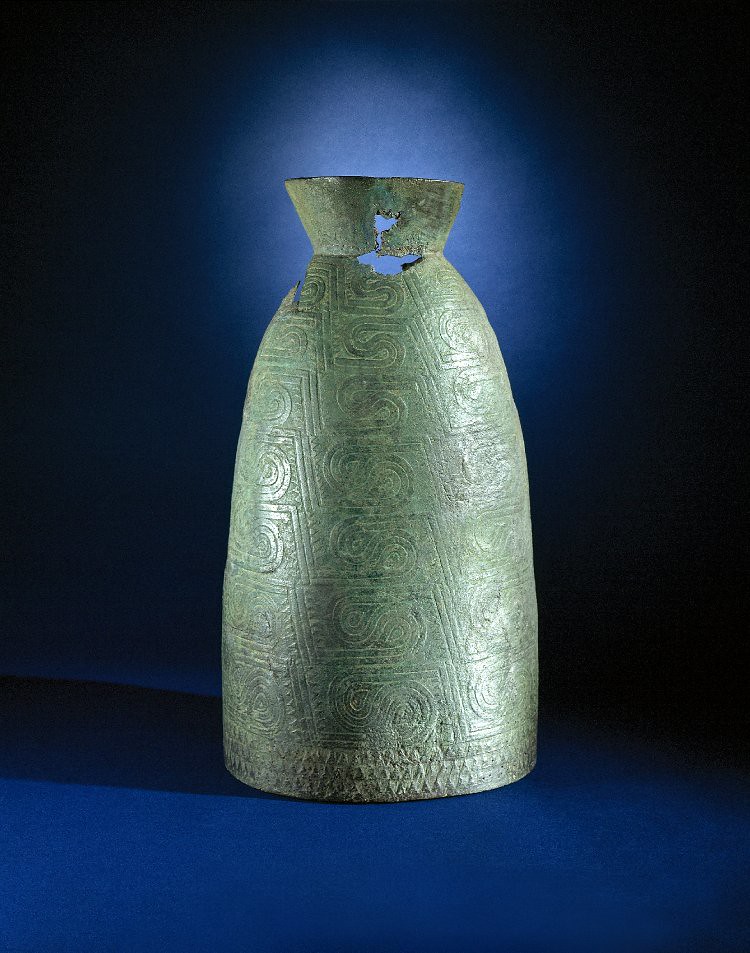Cultural relics are the witnesses of history
~ Monitoring Service of the British Broadcasting Corporation, 1982
Theme: Anamnesis
Photo credit: The British Museum
“Klang bell”, it sure doesn’t ring any bell to many Klangites and I reckon only a handful of Klangites would knew it ever existed. There were only (4) four bells of this kind found in Malaysia; (3) three were found in Bukit Jati, Klang in 1905 and the other in Kampung Penchu, Muar in 1963. The similarity of the form, motif and size of these bells indicate that they share a resemblance of the other (2) two bells of similar design found in Battambang, Cambodia, and thus, this has prompted many experts to believe that all the six (6) bells must have originated from the same place.The result of a lab analysis carried out on the Muar specimen has indicated that the bell was made sometime in the 2nd century during the Iron Age. Based on the same result, it can be assumed that all six (6) bells found in Malaysia and Cambodia are of the same age.

One striking and unique feature that sets apart these six (6) bells from other ancient bells found in Vietnam and Japan is that the bells’ outer bodies were engraved with repetitive motifs that resemble the letter “S”. So far, no one knows exactly what the motif means or represents, although some researchers have posited that the motif could have suggested the important role of rivers in relation to the people and places that they flowed past. The other hypothesis, as suggested by the director of The National Museum of Cambodia, Khun Samen, is that, “the bells may have been used in Buddhist cremation ceremonies. A S-shape pattern on the bell may be a symbol of the life cycle, from birth to death and re-birth.”
Of the three (3) bells found in Klang, one is being display in British Museum while another is being kept in Taiping Museum. However, the whereabouts of the third and last piece is unknown, as it was reported missing while under the custody of the Selangor Museum.
References
1. Adnan Jusoh, Yunus Sauman, Khairi Ariffin, Zuliskandar Ramli
& Nik Hassan Shuhaimi Nik Abdul Rahman. (2014). Loceng Gangsa Di Asia Tenggara
Dan Kepentingannya Dalam Konteks Arkeologi. Dlm. Mohd Samsudin et al (eds.). Arkeologi, Sejarah dan Budaya: Prosiding Seminar Antarabangsa Ke-3 Arkeologi, Sejarah dan Budaya di Alam Melayu, hlm. 291-305. Bangi: Institut Alam dan Tamadun Melayu (ATMA), UKM
2. Adnan Jusoh (2010). Loceng Gangsa Purba di Malaysia: Sumbangannya Dalam Penyelidikan Peradaban Masyarakat Peribumi Purba , "Jurnal Melayu (ISSN 1675-5513)", hlm. 1-28. Bangi: UKM
Location Map: Click Here
Location of the Klang Bell shown here is approximate.
My Artwork (Encoding Memory: The Eternal Presence of Absence)

[ KLANG BELL, 2017 ]
ACRYLIC ON CANVAS
505mm X 505mm

